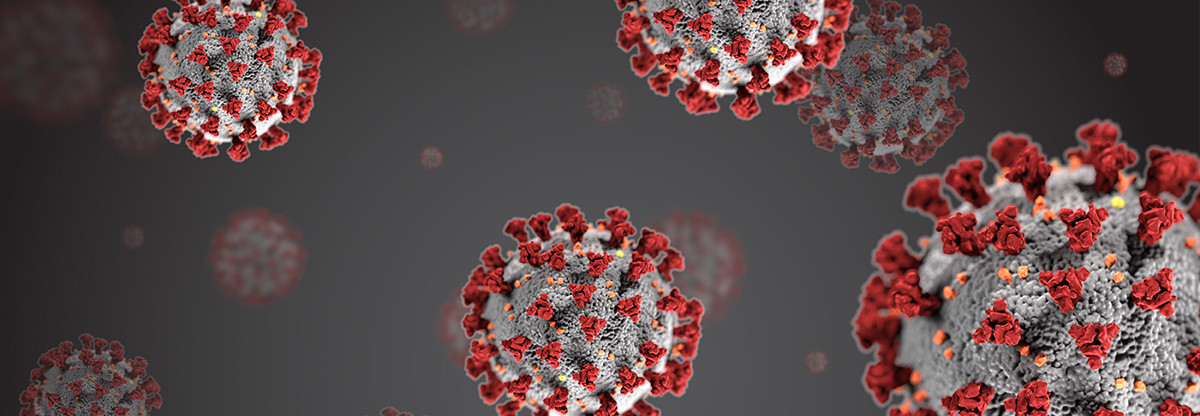Potential Benefits of Copper Coatings in Fighting Against COVID-19
Bacterial contamination of surfaces in hospitals, food processing facilities, and restaurants is the underlying cause of many, often life-threatening, microbial infections. The problem is exacerbated by the formation of heat-resistant spores that are refractory to alcohol-based and other disinfectants. Consequently, there has been a great deal of interest in coating surfaces with agents that afford long-term protection against environmentally- and institutionally-derived pathogens.
Prevention of viral and bacterial infections in public and health care settings remains a major challenge during the pandemic of COVID-19. The virus has globally created multiple health and socioeconomic challenges in all affected countries with unknown consequences. Development of effective anti-viral drugs and vaccines to cope with infection and spreading of COVID-19 are several months away at the best estimation.
Copper, silver and zinc have been known for centuries to have potent biocidal properties, for a wide range of viral pathogens [1, 2]. Recent studies show that coronavirus can remain infectious for around 48 hours on steel and fabric surfaces, more than 4 days on wood and plastic surfaces. Warnes et al. [3] reported that following exposure to copper at room temperature, the genome of coronavirus 229E is destroyed within 4 hours while van Doremalen et al. [4] found no viable COVID-19 after 4 hours.
As evidence of the potential clinical value of copper surfaces in healthcare increases, factors affecting implementation become important. Choice of hospital surfaces must balance aesthetic appeal, durability, resistance to damage from repeated exposure to hospital approved disinfectants, and cost. Given the high price of copper, copper coatings are thus of considerable interest.
Dr. Allison McGeer from Mount Sinai Hospital explaining the anti-bacterial benefits of Copper coatings (project supported by the Grand Challenges Canada grant)
Copper ions, Fenton-mediated reactions (Fenton reaction describes the formation of hydroxide (OH−) by a reaction between (Fe2+) and hydrogen peroxide (H2O2), generate highly reactive free radicals [5]. Ultrastructural and molecular biology experiments have demonstrated that the plasma membranes of bacteria are compromised in the presence of copper, leading to the release of intracellular components.
Our studies show similar effect of copper surfaces on spores [2]. The outer layer B. subtilis spore is composed of over 50 proteins providing the spores resistance to harsh environment for centuries. Studies indicate that copper ion reacts with the negatively charged coat molecules. The interaction of copper ions with dissolved oxygen can generate hydrogen peroxide and reactive oxygen species that could trigger the destruction of the protective spore coat and internal structures. Petal-like nanostructures are generated by an initial binding of copper ions to a protein core, triggering the formation of copper phosphate crystals crystallized in nanostructures called nanoflowers. These copper phosphate complexes bind to amino groups of proteins that lead to the formation of petal-like organic-copper phosphate structures. It is therefore probable that proteins derived during spore degradation served as nucleation material and can be an indicator of the spores destruction.
References
1. Gutierrez, H., Portman, T., Pershin, V., Ringuette, M., 2013. Evaluation of biocidal efficacy of copper alloy coatings in comparison with solid metal surfaces: generation of organic copper phosphate nanoflowers. J Appl Microbiol 114, 680-687.
2. Shafaghi, R., Mostaghimi, J., Pershin, V., Ringuette, M., 2017. Sporicidal efficacy of thermal-sprayed copper alloy coating. Can J Microbiology 63, 384-391
3. Warnes, S.L., Little, Z.R., Keevil, C.W., 2015. Human Coronavirus 229E Remains Infectious on Common Touch Surface Materials. mBio 6, e01697-01615
4. van Doremalen, N., Bushmaker, T., Morris, D.H., Holbrook, M.G., Gamble, A., Williamson, B.N., Tamin, A., Harcourt, J.L., Thornburg, N.J., Gerber, S.I., Lloyd-Smith,
5. Grass, G., Rensing C., and Solioz M. (2011) Metallic copper as an antimicrobial surface. Applied and Environmental Microbiology. 77: 1541-1547


